NR 508 Pharmacology Midterm Exam, with Answers
Document Content and Description Below
NR 508 Pharmacology Midterm Exam, with Answers-A patient who has primary hyperlipidemia and who takes atorvastatin (Lipitor) continues to have LDL cholesterol of 140 mg/dL after 3 months of therapy. T... he primary care NP increases the dose from 10 mg daily to 20 mg daily. The patient reports headache and dizziness a few weeks after the dose increase. The NP should: change the atorvastatin dose to 15 mg twice daily. change the patient’s medication to cholestyramine (Questran). add ezetimibe (Zetia) and lower the atorvastatin to 10 mg daily. recommend supplements of omega3 along with the atorvastatin. When used in combination with a lowdose statin, ezetimibe has been noted to produce an additional 18% reduction in LDL. Because this patient continues to have elevated LDL along with side effects of the statin, the NP should resume the lower dose of the statin and add ezetimibe. Atorvastatin is given once daily. Cholestyramine and omega 3 supplements are not indicated. A patient who has hyperlipidemia has been taking atorvastatin (Lipitor) 60 mg daily for 6 months. The patient’s initial lipid profile showed LDL of 180 mg/dL, HDL of 45 mg/dL, and triglycerides of 160 mg/dL. The primary care NP orders a lipid profile today that shows LDL of 105 mg/dL, HDL of 50 mg/dL, and triglycerides of 120 mg/dL. The patient reports muscle pain and weakness. The NP should: order liver function tests (LFTs). order a creatine kinaseMM (CKMM) level. change atorvastatin to twicedaily dosing. add gemfibrozil (Lopid) to the patient’s medication regimen. Hepatotoxicity and muscle toxicity are the two primary adverse effects of greatest concern with statin use. Patients who report muscle discomfort or weakness should have a CKMM level drawn. LFTs are indicated with signs of hepatotoxicity. It is not correct to change the dosing schedule. Gemfibrozil is not indicated. A patient comes to the clinic with a 4day history of 10 to 12 liquid stools each day. The patient reports seeing blood and mucus in the stools. The patient has had nausea but no vomiting. The primary care NP notes a temperature of 37.9° C, a heart rate of 96 beats per minute, and a blood pressure of 90/60 mm Hg. A physical examination reveals dry oral mucous membranes and capillary refill of 4 seconds. The NP’s priority should be to: obtain stool cultures. begin rehydration therapy. consider prescribing metronidazole. administer opioid antidiarrheal medications. Acute diarrhea is usually mild and selflimited. Nonpharmacologic measures, especially bowel rest and adequate hydration, are helpful and should be a priority. Stool cultures may be ordered after hydration therapy is begun. Metronidazole is indicated if C. difficile is present. Opioid antidiarrheals may prolong symptoms. A perimenopausal woman tells the primary care NP that she is having hot flashes and increasingly severe mood swings. The woman has had a hysterectomy. The NP should prescribe: estrogenonly HT. lowdose oral contraceptive therapy. selective serotonin reuptake inhibitor therapy until menopause begins. estrogenprogesterone HT. Estrogenonly regimens are used in women without a uterus and may be initiated to treat perimenopause symptoms if needed. Lowdose oral contraceptive pills are used to treat irregular menstrual bleeding in perimenopausal women. A primary care NP prescribes a nitroglycerin transdermal patch, 0.4 mg/hour release, for a patient with chronic stable angina. The NP should teach the patient to: change the patch four times daily. use two patches daily and change them every 12 hours. apply one patch daily in the morning and remove in 12 hours. To avoid tolerance, the patient should remove the patch after 12 hours. The transdermal patch is not changed four times daily or used on a prn basis. The patch is applied once daily. A parent calls a clinic for advice about giving an overthecounter cough medicine to a 6yearold child. The parent tells the NP that the medication label does not give instructions about how much to give a child. The NP should: order a prescription antitussive medication for the child. ask the parent to identify all of the ingredients listed on the medication label. calculate the dose for the active ingredient in the overthecounter preparation. tell the parent to approximate the dose at about one third to one half the adult dose. Overthecounter cough medications often contain dextromethorphan, which can be toxic to young children. It is important to identify ingredients of an overthecounter medication before deciding if it is safe for children. A prescription antitussive is probably not warranted until the cough is evaluated to determine the cause. Until the ingredients are known, it is not safe to approximate the child’s dose based on only the active ingredient. A patient who has disabling intermittent claudication is not a candidate for surgery. Which of the following medications should the primary care NP prescribe to treat this patient? Cilostazol (Pletal) Warfarin (Coumadin) [Show More]
Last updated: 1 year ago
Preview 1 out of 29 pages
Instant download
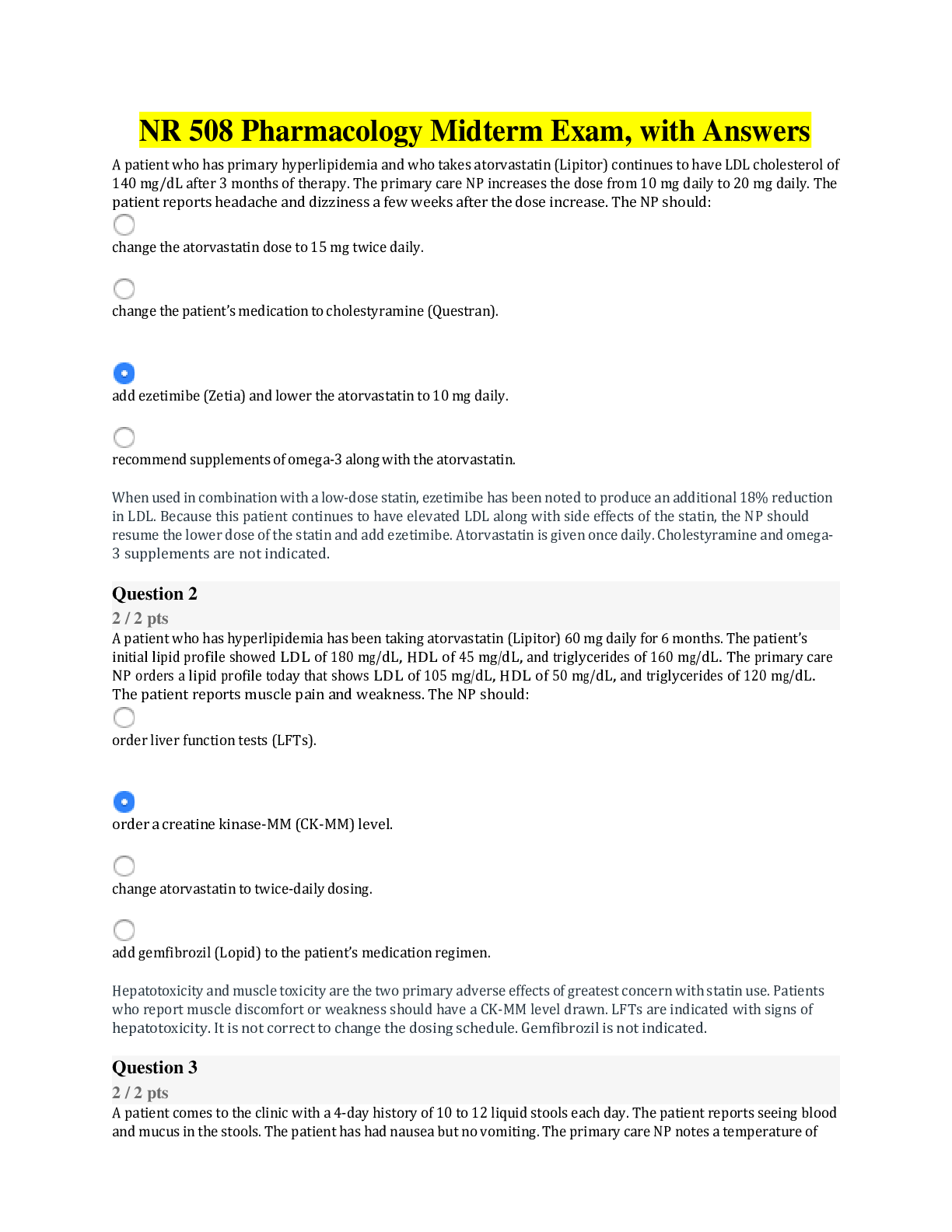
Buy this document to get the full access instantly
Instant Download Access after purchase
Add to cartInstant download
Also available in bundle (1)

Nr 508 Final Exam Practice Q&As With Rationales, Updated: Chamberlain College of Nursing
Nr 508 Final Exam Practice Q&As With Rationales, Updated: Chamberlain College of Nursing
By PROF 2 years ago
$60.5
6
Reviews( 0 )
Document information
Connected school, study & course
About the document
Uploaded On
Aug 02, 2021
Number of pages
29
Written in
Additional information
This document has been written for:
Uploaded
Aug 02, 2021
Downloads
0
Views
55


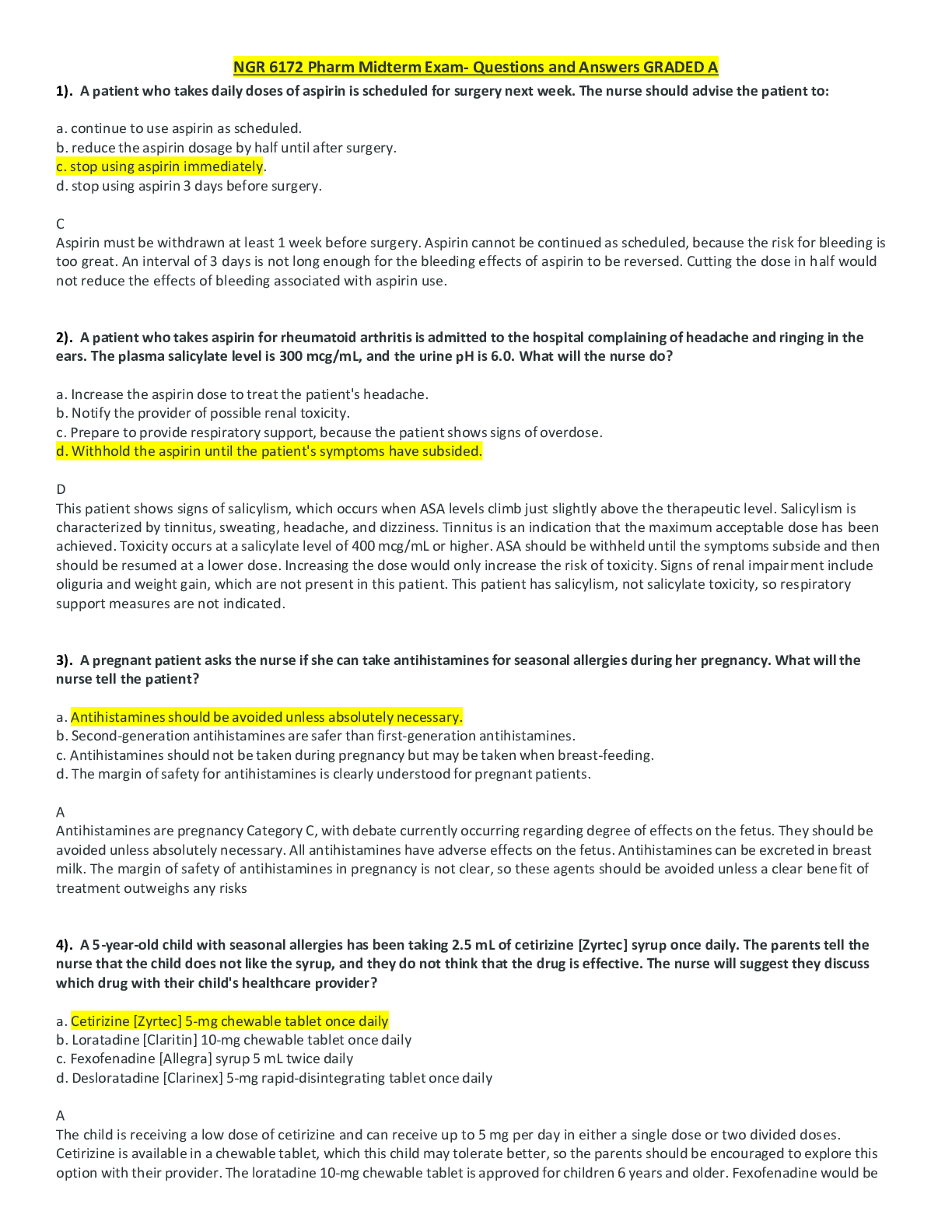

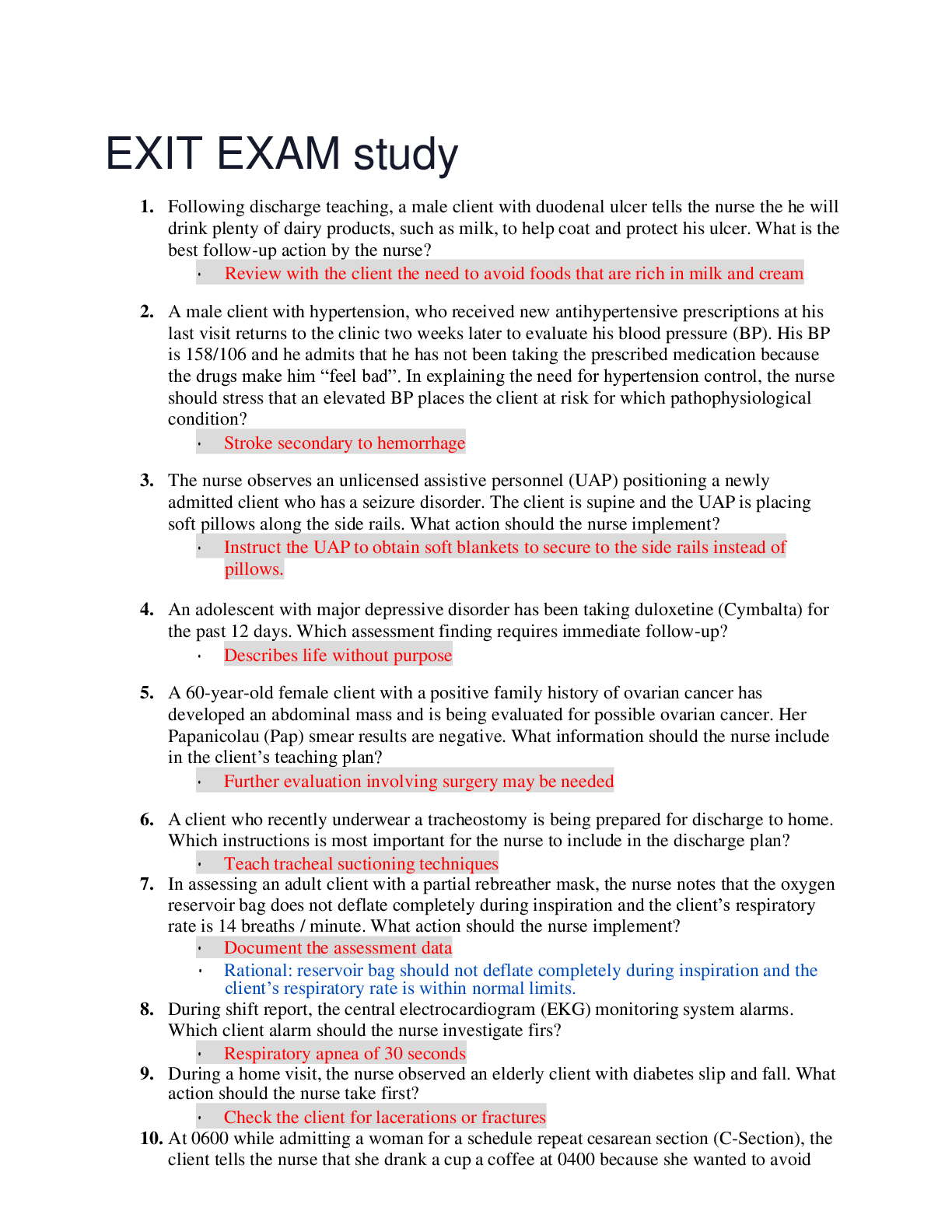
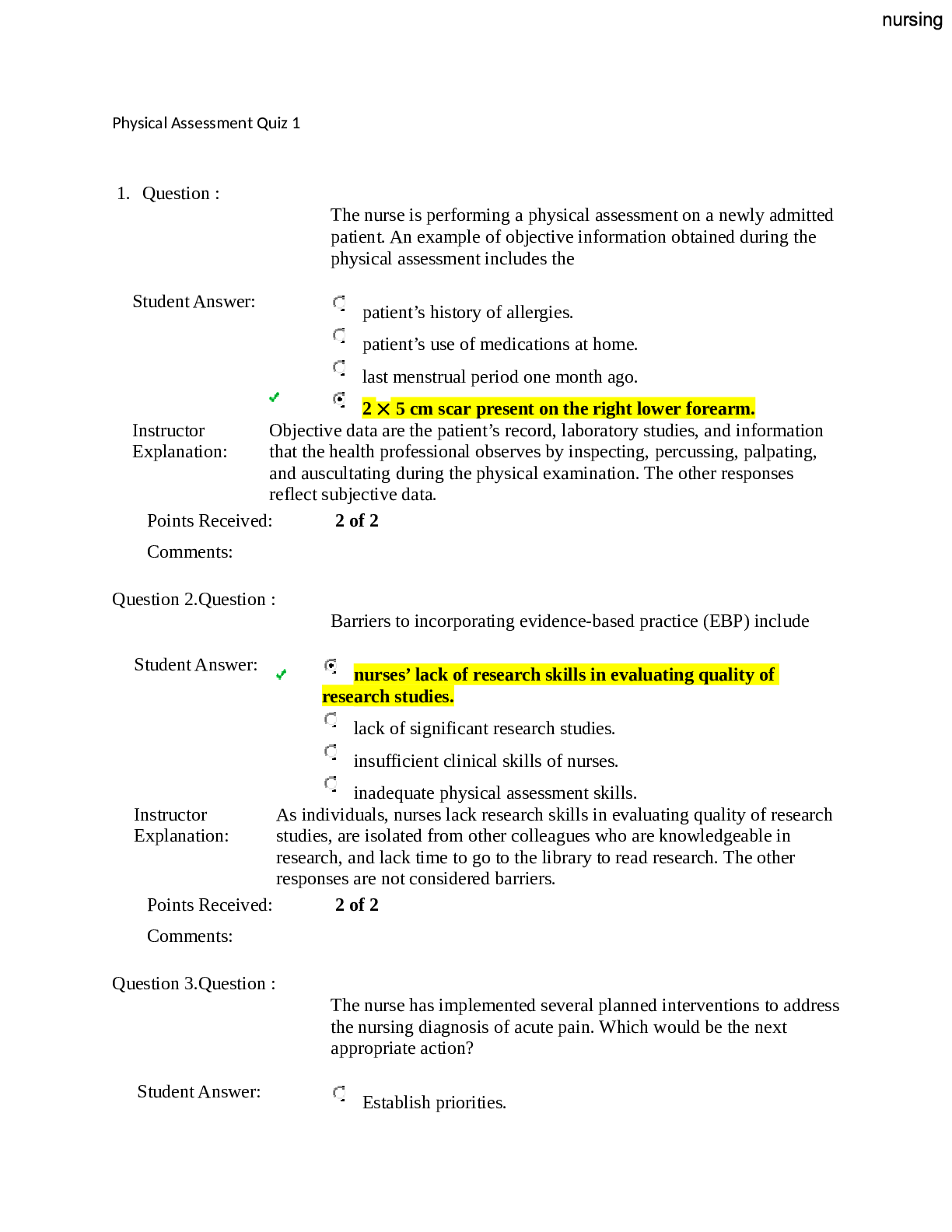
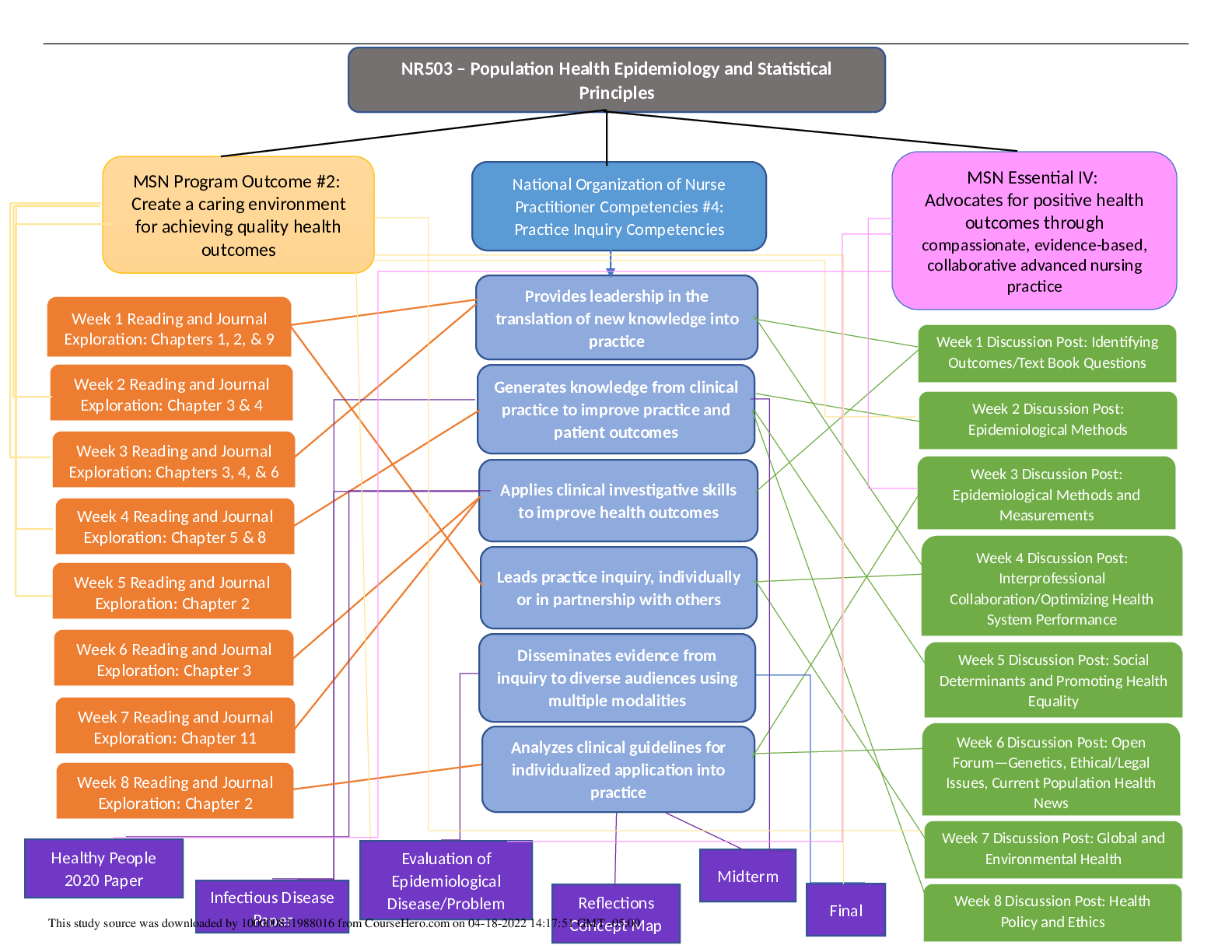

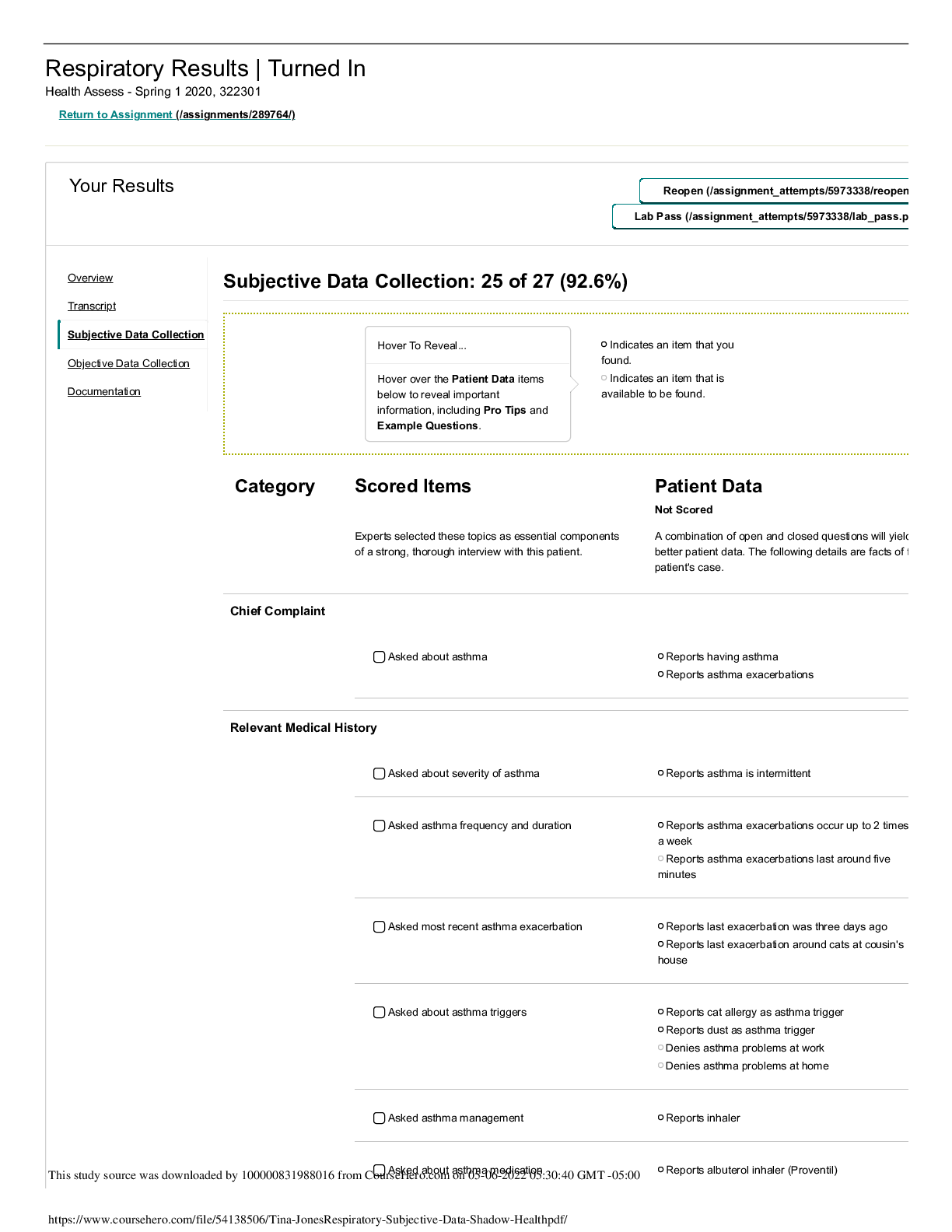
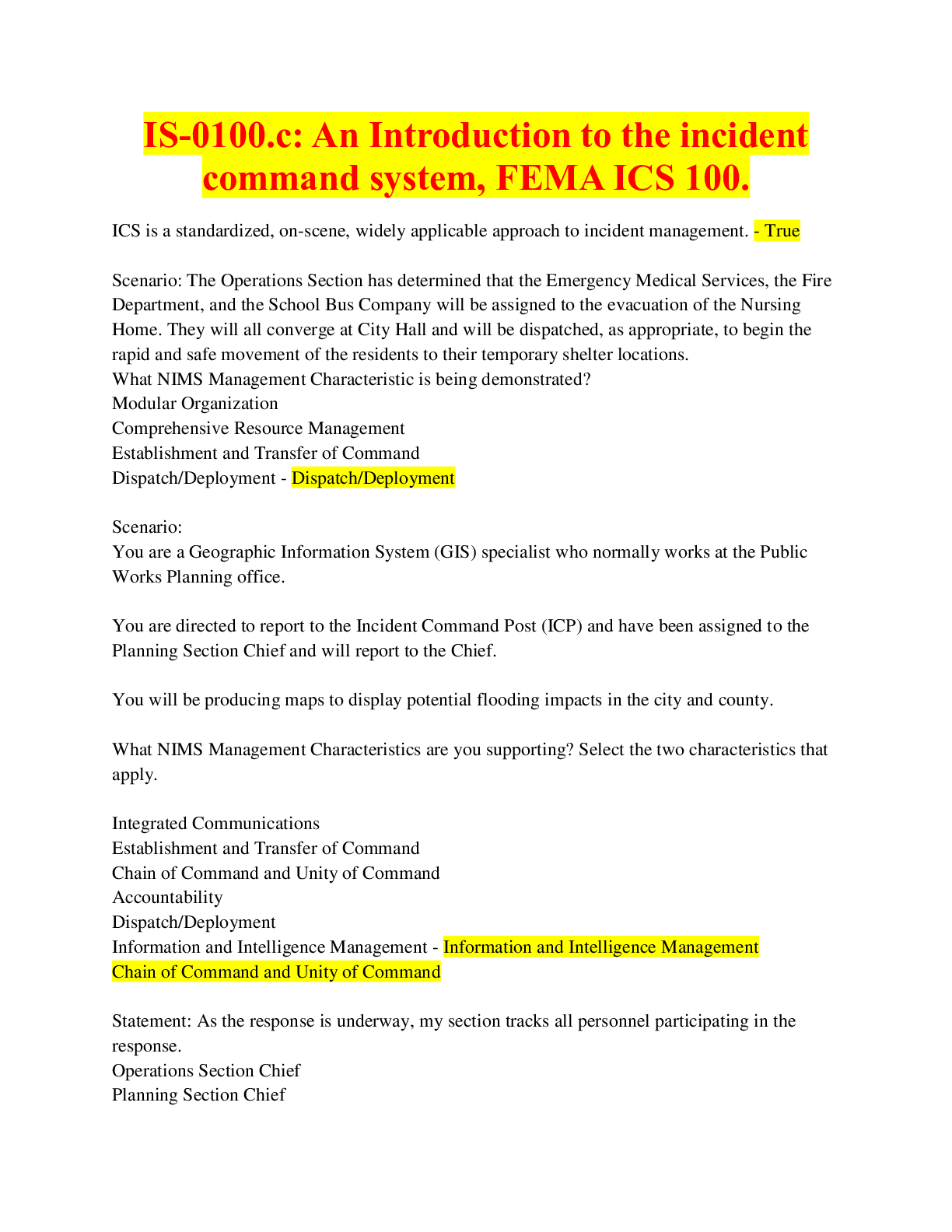

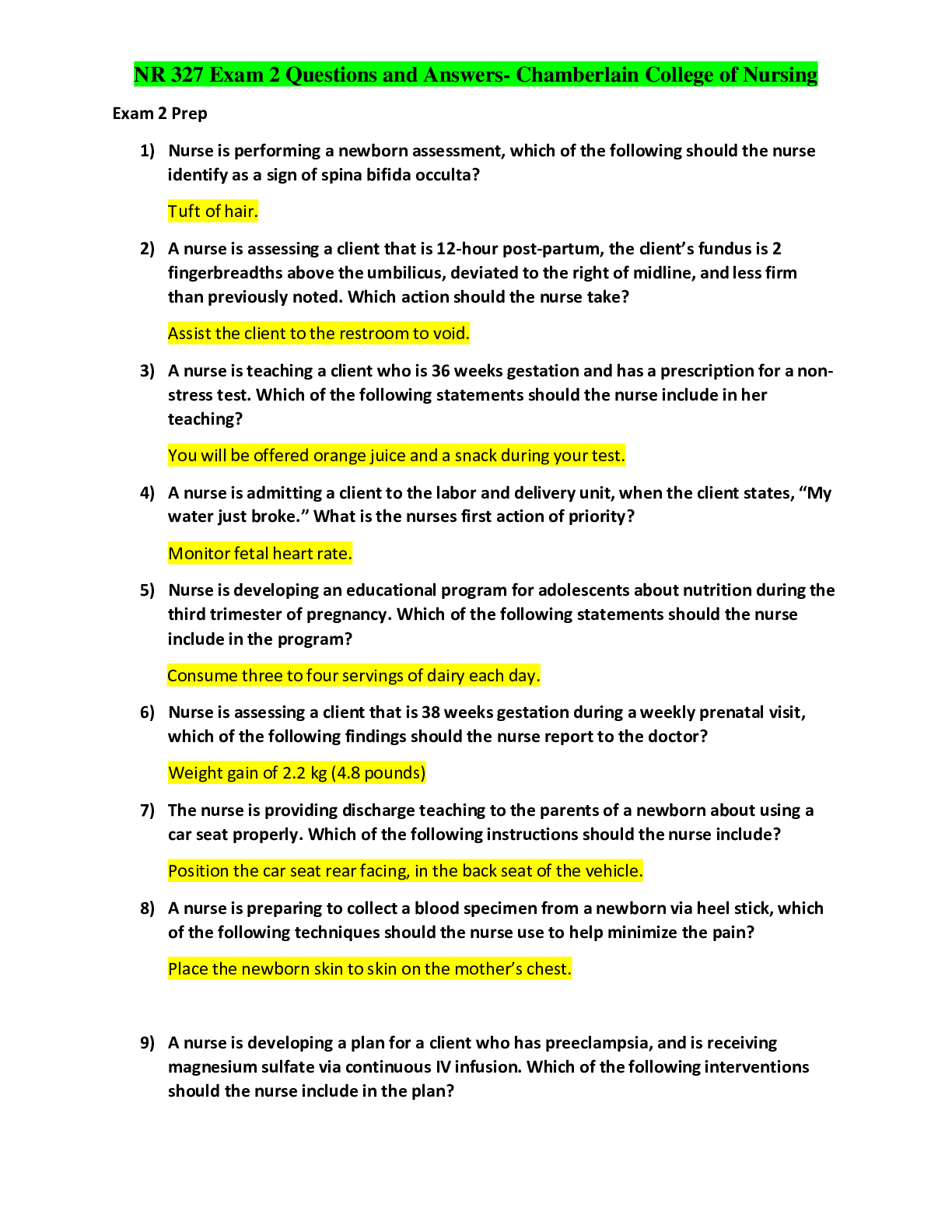

 Latest.png)

